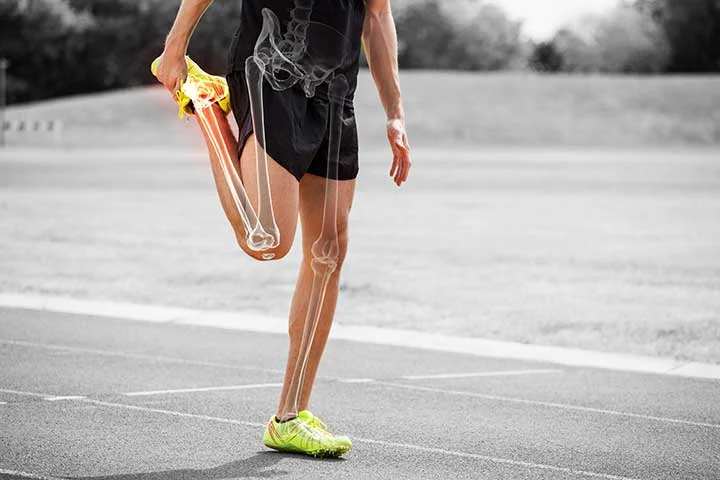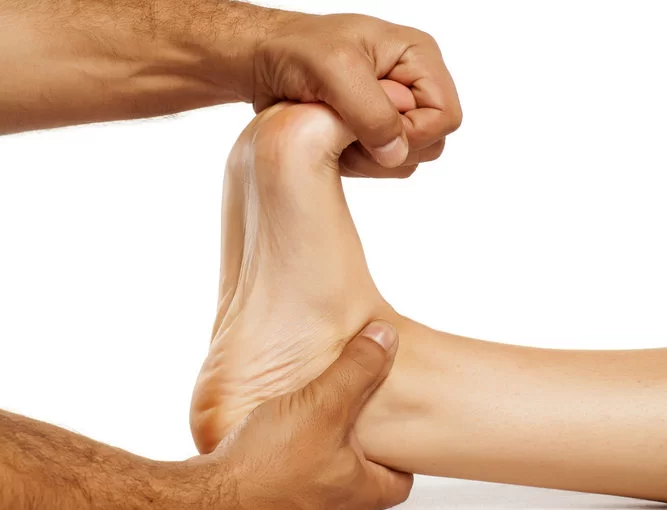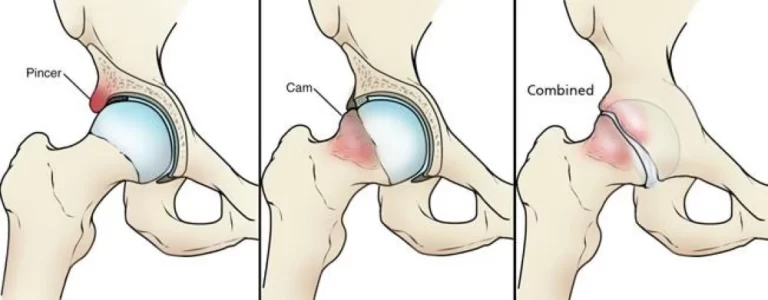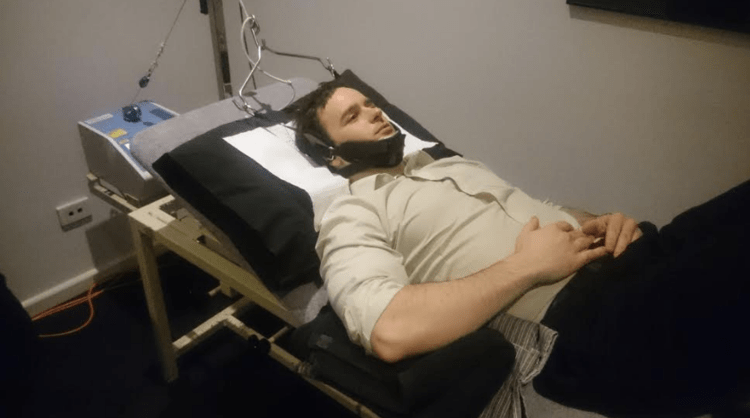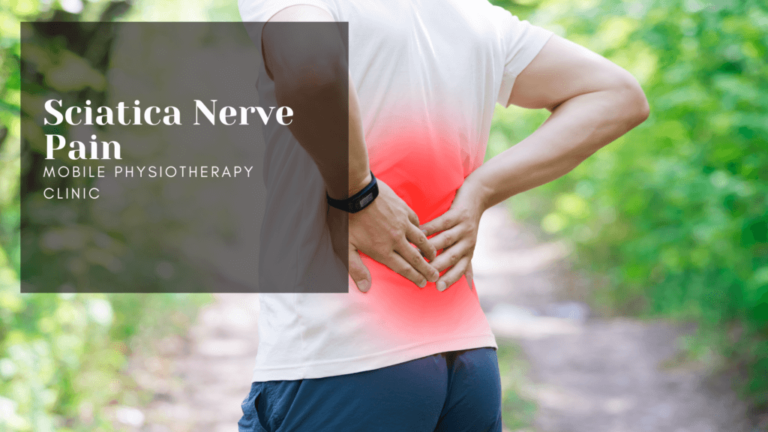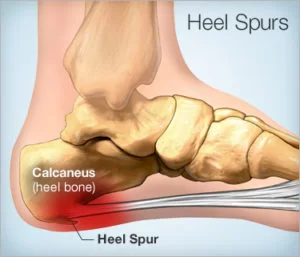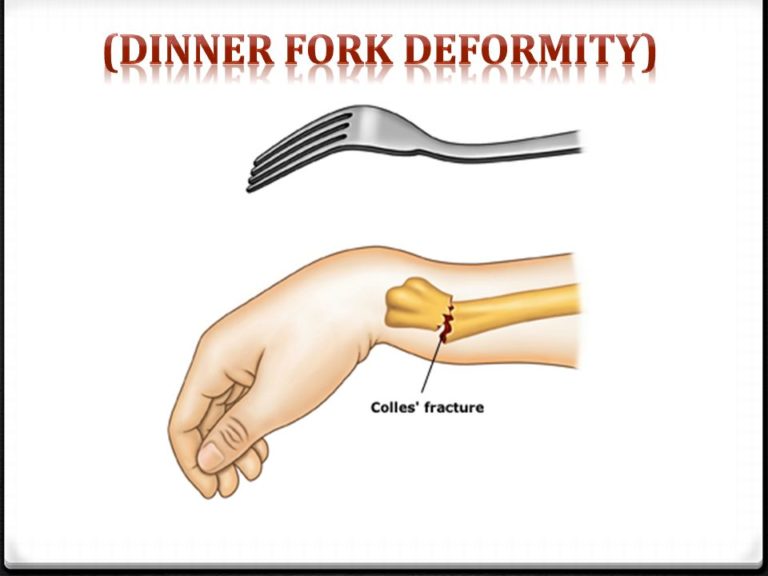How to Increase Bone Density
Introduction
The amount of minerals in your bones is known as bone density. Your bones are stronger and denser the higher your bone mineral density. Strong bones are less likely to break, thus this is important.
The body uses bones for a variety of purposes, including storing calcium, anchoring muscles, protecting organs, and giving structure. Even though it’s important for kids and teenagers to develop strong, healthy bones, adults can also take precautions to maintain bone health.
What is Bone Density?
Your bones are always changing; they are breaking down and growing new bones. Your bone mass increases and new bone is created by your body more quickly than existing bone is broken down when you’re young. Most people attain their peak bone mass around the age of thirty. Your bone mass then continues to remodel, but a little more slowly.
Your risk of developing osteoporosis, a disorder that results in weak and brittle bones, is determined by the amount of bone mass you have by the time you change 30 and the rate at which you lose it thereafter. You have more bone “in the bank” and are less likely to have age-related osteoporosis if your peak bone mass is higher.
What affects bone health
Bone health can be affected by several factors. For example:
- The calcium content of your diet. Low calcium diets have been related to early bone loss, reduced bone density, and a higher risk of fractures.
- Physical activity. Osteoporosis is more common in physically inactive people than in physically active people.
Tobacco and alcohol use. According to research, smoking may be a factor in weak bones. In a similar vein, men and women who regularly drink two or more alcoholic drinks daily may be at higher risk of developing osteoporosis. - Sex. Women have less bone tissue than men do, so they are more likely to develop osteoporosis.
- Size. If you have a small body frame or are extremely thin (body mass index 19 or less), you may have less bone mass available to you as you age.
- Years old. As you age, your bones weaken and become thinner.
- History of race and family. Asian and White people are the two most at-risk groups for osteoporosis. Furthermore, you run a higher risk if you have a parent or sibling with osteoporosis, particularly if there is a family history of fractures.
- levels of hormones. Bone loss can result from high thyroid hormone levels. Women experience a sharp increase in bone loss during menopause as a result of declining estrogen levels. Amenorrhea, or the prolonged lack of menstruation prior to menopause, raises the risk of osteoporosis as well. Loss of bone mass in men may be caused by low testosterone levels.
- eating disorders in addition to other diseases. In both men and women, severely limiting food intake and being underweight weakens bone. Furthermore, disorders like celiac disease and weight-loss surgery can interfere with your body’s capacity to absorb calcium.
- particular drugs. Bone is harmed by the long-term use of corticosteroid drugs such as dexamethasone, cortisone, prednisolone, and prednisone. Additional medications that may raise the risk of osteoporosis include methotrexate, some anti-seizure drugs like phenytoin (Dilantin) and phenobarbital, aromatase inhibitors used to treat breast cancer, and selective serotonin reuptake inhibitors.
Method for increasing bone density
Method 1: Following a Bone-Healthy Diet
Calcium
To maintain strong bones, make sure you’re getting enough calcium in your diet. 99% of the calcium in your body is found in your teeth and bones, making it the most common mineral in your body. Getting enough calcium will support the development of strong bones and the maintenance of bone density. To keep your bone density strong, put a priority on consuming foods high in calcium. Depending on your age and gender, different amounts of calcium should be consumed each day.
Men over the age of 70 and women under the age of 50 should consume at least 1,000 mg of calcium daily. A minimum of 1,200 mg per day is recommended for men over 70 and women over 50. Women who are nursing or pregnant should take at least 1,300 mg of calcium every day.
Men over the age of 70 and women under the age of 50 should consume at least 1,000 mg of calcium daily. A minimum of 1,200 mg per day is recommended for men over 70 and women over 50. Women who are nursing or pregnant should take at least 1,300 mg of calcium every day.
Numerous dairy products, including cheese, yogurt, and milk, are excellent providers of calcium.
If you decide to use soy milk, almond milk, or any other dairy alternative, make sure the product is calcium-fortified.
Broccoli, bok choi, black-eyed peas, kale, turnips, and collard greens are among the vegetables high in calcium.
Additionally, great providers of calcium and omega-3 fatty acids—both important to brain function—are sardines and salmon. They also contain vitamin D, which aids in the body’s absorption of calcium.
Select low-sugar whole-grain cereals that have been fortified with calcium and other nutrients. As a result of their widespread consumption of milk, these cereals provide a reliable and healthy supply of calcium.
Supplements for the diet are another source of calcium. Calcium carbonate and calcium citrate are the two primary forms. However, you should consult your doctor before taking calcium supplements because taking too much calcium can have unpleasant side effects, such as kidney stones.
vegetarians
Dairy products like milk, cheese, and yogurt provide the majority of calcium for non-vegans; vegans must obtain their calcium from other sources.
For vegans, some good sources of calcium are:
- enhanced rice, oats, and soy-based drinks
- soy-based beans
- Tofu with calcium set
- tahini sauce and sesame seeds
- brown and white bread (it is legally required in the UK to add calcium to both brown and white flour)
- dried apricots, raisins, prunes, and figs are examples of dried fruit.
Without fortified foods or supplements, a vegan diet has very little, if any, vitamin D. For everyone, however, summertime sun exposure on the skin provides the majority of their vitamin D needs. Never forget to cover up or protect your skin before it begins to burn or get red.
Vitamins D
Increase your diet’s vitamin D-rich foods to aid in your body’s calcium absorption. Calcium absorption in your body is improved by vitamin D. It is also important for the regrowth of bone. Vitamin D should be taken daily in amounts of at least 600 IU for those under 70 and 800 IU for those over 70. Make sure you include foods high in vitamin D in your diet to aid in the absorption of calcium and the development of strong, healthy bones.
The best natural sources of vitamin D are fatty fish, like mackerel, salmon, tuna, and swordfish.
Vitamin D is present in small amounts in egg yolks, cheese, beef liver, and certain types of mushrooms.
Vitamin D and A strengthening is a common practice for milk. Additionally, a lot of cereals and drinks have added vitamin D.
Getting vitamin D can also be gained by spending time in the sun. Your body generates vitamin D in response to ultraviolet light, but vitamin D production is reduced in those with darker skin. Every time you spend time outside, use sunscreen with a broad-spectrum SPF of at least 15.
Additionally, vitamin D can be obtained as a dietary supplement; however, before taking any supplements, consult your physician to ensure that they are safe for you.
Here are some more vegan sources of vitamin D:
morning cereals, fortified fat spreads, and drinks made with plants such as soy milk (enriched with vitamin D)
supplementation of vitamin D
Learn more about the vegan diet’s sources of calcium and vitamin D.
Vegan mothers must make sure they acquire adequate vitamins and minerals during pregnancy and lactation in order for their children to grow up in a healthy way.
For further information, read about eating a vegetarian or vegan diet while pregnant.
In order to give your kid or child the energy and nutrients they require for growth, you must make sure they eat a diverse range of foods if you are raising them on a vegan diet.
At-risk groups
The Department of Health and Social Care advises that individuals in groups of people who are more likely to be deficient in vitamin D take a daily 10-microgram (400IU) supplement. These coalitions are:
those who spend little time outside, such as those who are frail, housebound, or staying in a care facility; individuals who typically wear clothing that covers the majority of their skin when outdoors
persons of African, African-Caribbean, or South Asian descent who have dark skin
Good places to get vitamin D from:
foods enriched with fat, like some fat spreads and breakfast cereals; oily seafood, like salmon, sardines, and mackerel; and egg yolks
If your doctor suspects that you may not be getting enough calcium from your diet, they may recommend vitamin D and calcium supplements in addition to osteoporosis medication treatments if you have been diagnosed with the condition.
Magnesium
Eat enough magnesium to aid in the healing of your bones. Magnesium is a necessary component for all bodily systems and plays an important role in the growth of new bone. Consuming foods high in magnesium will help you maintain proper amounts and maintain the density and strength of your bones. At least 400–420 mg should be consumed daily by adult males, and at least 310–320 mg by adult women. Rich dietary magnesium sources include:
- Cashews, peanuts, almonds, and peanut butter
- leafy greens, such as spinach
- Legumes and whole grains, particularly soybeans and black beans
- Bananas, avocados, and skin-on potatoes
Note: When it comes to absorption, magnesium and calcium compete. Magnesium may contribute to a calcium deficiency if your calcium levels are low. However, you probably won’t have to worry about these effects if your diet contains enough calcium.
Vitamins B
Consume foods high in B vitamins to prevent bone loss and fractures. Your body’s production of osteoblasts, the cells that make new bone, may be lowered by a vitamin B12 deficiency. Deficits in vitamin B12 increase the risk of bone fractures and accelerate the thinning of bones. Fortunately, including foods high in vitamin B in your diet can help maintain strong and healthy bones. Suitable food sources for vitamin B12 consist of:
- organ meats, like kidney and liver
- Meats that are red, like beef and venison
- shellfish, particularly oysters and clams
- Fish, dairy products, and fortified cereals
It is also possible to take B12 as a nutritional supplement in the form of a sublingual liquid or capsule, which makes it simpler for vegans and vegetarians to consume enough of it.
Vitamin A
Excessive vitamin A intake has been connected to a higher risk of bone fractures, according to some studies. People who consume liver, which is a high source of vitamin A, on a daily basis are advised to take supplements containing retinol (a type of vitamin A typically found in foods that come from animals) or avoid eating liver more frequently than once a week as a precaution.
It is recommended that individuals who are at risk for osteoporosis, such as older adults and postmenopausal women, consume no more than 1.5 mg (1,500 micrograms) of retinol daily. This can be achieved by reducing the amount of liver and liver products consumed, as well as by avoiding retinol-containing supplements, which may include fish liver oil.
Vitamins c
Take 75–90 mg of vitamin C per day. Your body can produce more bone by using vitamin C to boost collagen synthesis and procollagen stimulation. Increased bone mineral density can be achieved by eating a diet rich in vitamin C, particularly for postmenopausal women. Vitamin C intake for adults should be at least 90 mg for men and 75 mg for women daily. Suitable food sources for vitamin C include:
- Brussels sprouts, cantaloupe, strawberries, kiwifruit, tomatoes, red and green peppers, and citrus fruits and juices
- Potatoes, spinach, cauliflower, cabbage, and peas
- Cereals and other goods fortified
- The majority of people consume enough vitamin C from food. If you require extra vitamin C, you can take pills or powder supplements that you can mix with water.
Vitamin K
Consume 90–120 micrograms of vitamin K daily. Vitamin K may even lower your risk of fracture by increasing bone density. Adult women should receive no less than 90 mcg daily, and adult men should receive no less than 120 mcg daily. Many foods contain vitamin K, but some excellent ones are as follows:
leafy green vegetables, like collard and turnip greens, broccoli, kale, and spinach
Nuts and vegetable oils, particularly soybean oil
berries, grapes, and figs, among other fruits
Cheese and fermented foods
Vitamin E
Stay away from vitamin E supplements. Antioxidant vitamin E is an important part of a diet that is both balanced and healthful. You should use caution when using vitamin E supplements, though, as they typically provide more than 100 IU per dose—much more than the 15 mg/22.4 IU daily recommended intake. Overconsumption of vitamin E may lead to a decrease in bone mass and the formation of new bone.
Getting enough vitamin E from food sources can be very beneficial to your health and is unlikely to be harmful to your bones.
Nuts, seeds, broccoli, kiwifruit, mango, tomato, and plant oils are good dietary sources of vitamin E.
Surprising foods that improve bone density
Dynamic duo
With calcium, a key component of bones, most foods, and drinks important for supporting bone health work similarly to prunes. The combination of the mineral and vitamin D facilitates the body’s absorption of calcium.
The bone naturally undergoes a continuous process known as remodeling in which it breaks down and rebuilds itself. We replenish the supply of calcium through the food and drink we consume, as the bones release stored calcium into the bloodstream to perform bodily functions like blood clotting and muscle contractions, among others.
Around the age of 30, our bone mass increases, and it stays there for the next 20 years or so. However, after menopause, our bodies begin to lose bone more quickly than they are able to replace it. Furthermore, our bodies may begin to lose calcium from our bones as we age.
It’s common knowledge that foods high in calcium include dark leafy greens like broccoli, Swiss chard, collards, and kale, as well as dairy products like milk, yogurt, and cheese. Fruit juices and breakfast cereals are frequently supplemented with the mineral.
However, you may not be aware of these additional foods that are a great source of calcium.
Figs that have dried.
There are roughly 65 milligrams (mg) of calcium in two figs. Figs can be added to oatmeal or smoothies in the same way as prunes (possibly even more delicious than their relatives). They also taste great as a pizza topping or combined with cheese.
Salmon canned.
Three ounces of food contain 180 mg of calcium. the reason canned salmon is so rich in the mineral is because it contains small, soft bones that you probably won’t even notice. “The 36 mg of calcium in a typical salmon fillet is hardly sufficient to be considered an effective source. he states. Salmon from cans can be quickly combined with mayonnaise to make a dip or used as a sandwich spread (just like tuna).
Milk plants.
It makes sense that we automatically consider cow’s milk to be an excellent source of calcium. However, soy, rice, or almond milk is usually fortified to achieve a calcium level comparable to that of dairy milk: Eight ounces have 350–400 mg. Examine labels carefully and keep an eye out for any added sugar in plant milk.
Tofu.
A 4-ounce portion of this staple of Asian cuisine made mostly of soy contains 430 mg of calcium; calcium-enriched varieties frequently contain twice that much. soy foods, such as edamame, are typically high in calcium and a significant source of protein, both of which are important for healthy bones.
Almond butter and almonds.
Almonds are widely loved despite being high in calories due to their heart-healthy properties. Two tablespoons of almond butter have 111 mg of calcium, compared to 190 mg in a half-cup of nuts alone.
White beans in cans.
These beans, which include navy, cannellini, great northern, and lima beans, are high in calcium—about 190 mg per cup when used in soups and chilis. One wise source of protein is beans
Method 2 Making Smart Lifestyle Choices
- Strengthen your bones and practice aerobic exercise for 30 minutes each day.
Frequent aerobic exercise will improve your general health and help you maintain and grow your bone density. To prevent bone loss and maintain the health of your bones, try to get at least 30 minutes of exercise each day.
Use cardiovascular exercises to strengthen your bones and work your muscles, such as swimming, cycling, and running.
Exercises like brisk walking, hiking, tennis, or even dancing can add variety to your regimen.
2. Exercises involving weightlifting will strengthen your bones.
Exercises that involve both aerobic and weight lifting are beneficial to your bone health, but resistance training, or weight lifting, can increase the mass of your bones and muscles in particular places. Squats, for instance, can help you increase the bone density in your legs. Work out with weights two to three times a week to increase bone density.
Additionally, weightlifting strengthens your muscles, which support and preserve the density of your bones.
For strengthening, and weight training, elastic exercise bands, and bodyweight exercises like pushups are great options.
3. Stick to low-impact exercise if you want to safely strengthen your bones.
Bone strength is largely maintained by diets high in calcium and vitamin D. However, physical activity, particularly those that require you to lift your own weight against gravity, additionally supports bone growth and maintenance.
However, low-impact alternatives can also maintain strong bones more safely, he says. Older adults who are more likely to develop bone-eroding osteoporosis should likely ignore trends suggesting they participate in high-impact activities like “jump training” or other similar activities. These consist of
- Strolling quickly outside or using a treadmill.
- Utilizing a machine to climb stairs.
- Engaging in mild aerobics.
- Making use of elliptical training devices.
4. Some activities to Strengthen Bones for Bone Density
Weight-bearing workouts are the most effective means of strengthening bones. Weight-bearing workouts include running and walking, which need your feet to touch the ground. Through gentle pressure, the bones are encouraged to repair and gain density through these activities.
Depending on how well you can move, you can either stand or sit while completing these bone-strengthening exercises. suggests using a sturdy chair—such as a dining room chair—instead of a couch for sitting activities.
Strengthening exercises
Exercises that focus on strength are necessary for increasing bone density. The muscles tug on the bones when you tension and contract them.
Tension without the use of weights:
You can get stronger by tensing your muscles and moving slowly and carefully. Chemicals that are released when you tense your muscles can aid in boosting bone density.
Exercises with resistance
your muscles release calcium, magnesium, and other elements that strengthen your bones when you include resistance training in your routine. Weight-bearing equipment, such as weights or resistive bands, provides mechanical resistance for these workouts.
She recommends performing these workouts for three sets of ten repetitions. You’ll receive some cardio and toning exercises.
Pushups:
There are several ways to perform pushups. Try doing something other than a push-up.
Elevated push-ups: Facing a wall, place yourself about three feet away from it. Put your hands against the wall at chest height, shoulder-width apart. Lean into the wall and flex your elbows. As you push your body weight away from the wall, straighten your elbows.
Adapted seated pushups:
With your arms shoulder-width apart and your hands facing down, hold a lightweight pole, such as a broomstick, at chest height. Arms straightened, push the rod away from your chest. After that, bring your arms back to your chest by bending your elbows.
Resistance bands:
A lightweight, portable method of strengthening is with resistance bands, such as TheraBand. To differentiate between different resistance levels, they are color-coded. It is preferable to start with a lighter resistance band and work your way up to a moderate one and eventually, a heavier one if you’re new to exercising or have joint problems. stress the meaning of not forcing any movement.
Band pull:
You can do this workout while sitting or while standing. Once more, it’s important to have your feet supported by footrests or the floor when seated. Maintain a 5-inch distance from your chest while holding onto the band with your arms shoulder-width apart. The hands are at chest level, palms down. Pull the band slowly while spreading your arms wider than shoulder-width apart. As you create tension in your arms, try to extend them as far as you can. Let go of the tension in your arms and slowly return to the starting position.
Core and balance exercises
Your pelvic girdle, back muscles, and stomach muscles are all part of your core. “a core workout doesn’t necessarily mean doing sit-ups.” “Every action we take involves the core.” suggests:
One-leg stand:
Place your hands on the back of a solid chair or a counter. Lift one leg off the ground and maintain balance on the other. Ten counts while contracting your abdominal muscles. Alternate legs by putting yours back on the ground. Repeat several times. Use two hands to steady yourself on the kitchen counter when you first try it. You can eventually work your way up to stabilizing with just one or two fingers on each hand as your balance and core strength increase. You will eventually be able to get rid of the hands.
Maintain a straight posture by contracting your belly button to pull it closer to your spine. As you steady your core, stand more straight.
Core exercises when seated:
Bend your legs, sit on a sturdy seat, and cross your arms across your chest to strengthen your core muscles while seated. Using your core, raise each thigh one to two inches at a time. To begin, lower your thigh to the beginning.
Arms folded across your chest, take a solid seat, straighten one leg, and then take a seat again. Change up your legs.
Flexibility
It is important to stretch in order to lengthen the muscle fibers. There are numerous ways to stretch the lower and upper bodies, as well as the hamstrings and calf muscles, which can become extremely tense from prolonged sitting.
Spread your hamstrings by lying on your back with a pillow beneath your head. With your feet flat on the floor or bed, bend your knees. Raise one leg toward the ceiling while keeping the other straight. Grab and hold behind the thigh with both hands for a duration of 30 to 60 seconds. To provide more support for your leg, you could want to interlace your fingers. Avoid pushing the strain. Drop your leg to the beginning position. Replicate with different legs. Perform a set or two.
Shoulder stretch:
Raise your arms in front of you while standing or sitting, keeping your elbows straight. Join your fingers. Lift both arms in the direction of the ceiling. For 20 to 30 seconds, hold. Return to your starting location slowly. Perform 3-5 sets.
She advises against forcing a stretch and instead to only extend till you feel a mild stretch.
Cardio
A walk can provide your heart and lungs with an aerobic workout if you can manage to leave the house. You can work out on an elliptical or treadmill if you have a home gym set up.
Try soft marching in place if you have to stay at home and don’t have access to any aerobic equipment. Set a timer for either one minute or thirty seconds.
Strength and flexibility can also be improved by yoga and pilates. However, certain positions should not be performed by people who already have osteoporosis, as this may increase the risk of bone breakage or fracture.
To determine which exercises are best for you, speak with your doctor or a physical therapist if you’re worried about your risk factors.
Plyometric exercises can aid in increasing bone density. Exercises known as plyometrics, which entail a lot of jumping, help your body develop stronger, denser bones. To increase the density of your bones, incorporate a few plyometric exercises into your training regimen.
Skipping rope is an excellent way to build bone strength and burn calories.
Another option would be to use a trampoline or perform jumping jacks.
Warning: Osteoporosis patients should avoid jumping because it increases the risk of falls and broken bones. Furthermore, individuals with hip or leg issues or certain other medical conditions would not be advised to use it. If you are unsure if jumping is something you should do, consult your doctor.
Method 3 for Bone Health: Quit Smoking and Drink in Moderation
Give up smoking to maintain strong bones.
A higher risk of bone diseases, such as osteoporosis, is caused by smoking. Giving up smoking can help you have better bone health because it also affects how dense your bones are. Try to keep your air clean by not inhaling secondhand smoke if you are around smokers.
Giving up smoking reduces your risk of numerous diseases. Smoking increases the risk of low bone density and fractures over time.
Exposure to secondhand smoke in your early years of adulthood can raise your risk of low bone mass in the future.
Smoking also causes women to produce less estrogen, which may also weaken bones.
Restrict the amount of alcohol and caffeine you take in. Both alcohol and caffeine can interfere with your body’s ability to create new bone and can also negatively impact the quality of your sleep, which is important for controlling bone density and mass. To help strengthen and increase the density of your bones, try limiting your alcohol and caffeine intake.
If you do choose to consume alcohol, do so in moderation and try not to drink more than three drinks in a 24-hour period.
She suggests having one or two sips of alcohol per week in moderation. Additionally, nicotine loses 2% of bone. The combined bone loss caused by excessive alcohol and nicotine use is actually doubled, amounting to 8% bone loss.
If you have persistent bone pain, consult your physician. Schedule a visit with your doctor if diet and exercise don’t seem to improve the health of your bones. In addition to offering treatment recommendations and medication prescriptions to help increase bone density, they can perform tests to determine whether you have an underlying medical condition.
In both men and women, estrogens and progestins aid in maintaining bone density. The quantity of these hormones your body produces declines with age. Your chance of developing osteoporosis may be decreased by taking hormone supplements, which include estrogen products.
Osteoporosis can be treated or prevented with medications such as zoledronic acid, alendronate, risedronate sodium, and ibandronate.
Menopause
After menopause, when their ovaries essentially stop producing estrogen, which has a protective impact on bones, women lose bone more quickly for several years.
There are no particular calcium or vitamin D guidelines for menopause; however, the pace of bone loss can be slowed down with a good, balanced diet that includes calcium, summertime sunshine, and vitamin D supplementation.
Method 4 of Bone Health: Bone Density Testing
The only method for determining the degree of your bone loss is to undergo a bone mineral density test (BMD). Dual-energy X-ray absorptiometry (DEXA) is the gold standard for testing bone density.
How often you should get tested for bone density will be decided by your physician. You might require a test every six months if you have specific risk factors or are on osteoporosis medication. Please verify with your insurance provider before taking the test. Bone density tests may only be covered by some every two years.
Identify osteoporosis before suffering a fracture.
Four times as many older women as men suffer from osteoporosis, a disease that causes weak, brittle bones. This discrepancy is partly caused by the fact that after menopause, women lose the hormone that protects their bones, estrogen. Osteoporosis usually doesn’t show symptoms until a bone breaks, though you may notice a slight decrease in height or a slightly bending posture as you get older.
But bone density testing is one tool that can prevent that painful situation. A DEXA scan is a type of X-ray technology used to measure the density of minerals, including calcium, in bones. It can identify osteoporosis before a potentially harmful fracture occurs. DEXA can also assess the effectiveness of osteoporosis medication and calculate your risk of a future break in the bones.
Every woman should have a bone density test starting at age 65 and every two years after that. In addition, women between the ages of 50 and 64 who have low body weight, a history of fractures, a parent who suffered a hip break, a disease associated with bone loss, or the use of medications known to thin the bones should start having regular testing done.
How is DEXA scanning done?
You will lie on your back on a padded table for fifteen minutes. An x-ray machine will go over your lower back and hips, and another will go underneath. At certain points during the x-ray test, you will be asked to remain motionless and hold your breath.
Two scores will be produced by the test. Your bone density is compared to that of a young adult in good health. In the second, it is contrasted with peers who share the same ethnicity, age, and gender. Your bones will be denser the higher your score. While the guidelines currently in place assist your physician in determining when to treat low bone density, more investigation must be done to determine the reliability of the guidelines related to ethnicity.
Prevention
There are several things you can do to prevent bone density loss. Here are some tips:
- Eat a diet that is balanced. Ensure that your diet provides adequate amounts of calcium and vitamin D. Calcium is necessary for maintaining and growing bone mass, and vitamin D helps the body absorb calcium. Fortified foods, leafy green vegetables, and dairy products are excellent sources of calcium. Rich foods high in fat, fish, and eggs are excellent providers of vitamin D.
- Get regular exercise. Weight-bearing exercises, such as walking, running, and dancing, help to stimulate bone growth. Strength training exercises also help to build bone mass. Make it a goal to engage in moderate-intense physical activity for a minimum of half an hour every day.
- Quit smoking and limit alcohol intake. Bone loss can be caused by smoking or drinking too much alcohol.
- Maintain a healthy weight. Being overweight or obese puts extra stress on your bones, which can contribute to bone loss.
- Get enough sleep. When you sleep, your body releases hormones that help to build bone mass. Sleep for seven or eight hours every night.
- Talk to your doctor. If you have any risk factors for bone loss, such as a family history of osteoporosis or a history of bone fractures, talk to your doctor. They may recommend additional measures to help prevent bone loss.
Here are some additional tips for preventing bone density loss in women:
- Take hormone replacement therapy (HRT) if you are menopausal. HRT can help to prevent bone loss by increasing estrogen levels in the body.
- Get a bone density test. A bone density test can help to identify early signs of bone loss so that you can take steps to prevent further loss.
- Consider taking calcium and vitamin D supplements. See your doctor about taking supplements if your diet isn’t providing enough calcium and vitamin D.
By following these tips, you can help to keep your bones strong and healthy and prevent bone density loss.
Complication
Complications of Increasing Bone Density
While increasing bone density is generally beneficial, there are a few potential complications to be aware of, such as:
- Jaw osteonecrosis: This is a rare condition that causes the jawbone to die. It is a rare complication of bisphosphonates, which are a type of medication used to treat osteoporosis.
- Atypical femoral fractures: These are fractures that occur in the upper thighbone. They are another rare complication of bisphosphonates.
- Esophageal irritation: This is a condition that causes inflammation of the esophagus. It is a rare complication of bisphosphonates.
- Kidney problems: Bisphosphonates can sometimes cause kidney problems, especially in people who already have kidney disease.
- Allergic reactions: Bisphosphonates can sometimes cause allergic reactions, including rash, itching, and swelling.
Low bone density can lead to a number of complications, including:
Fractures: This is the most common and serious complication of low bone density. Fractures can occur in any bone in the body, but they are most common in the hip, spine, and wrist.
Bone Pain: Fractures can cause severe pain, and they can also lead to long-term pain and disability.
Loss of mobility: Fractures can make it difficult to walk, climb stairs, and perform other activities of daily living.
Increased risk of death: People who have hip fractures are at an increased risk of death within the first year after the fracture.
In addition to these complications, low bone density can also lead to:
Kyphosis: This is a condition in which the spine curves forward, causing a hunchback.
Loss of height: People with low bone density may lose height over time.
Muscle weakness: Low bone density can also lead to muscle weakness.
See your doctor if you have any concerns regarding your bone density. They can assess your risk factors and recommend a bone density test. If you are diagnosed with osteoporosis, there are treatments available to help prevent fractures and other complications.
FAQs
Do eggs help build strong bones?
hens. For those who enjoy breakfast, the good news is eggs help strengthen bones and are a good source of vitamin D. Since vitamin D is only present in the yolks, you will need to obtain it from other sources if you frequently eat omelets made with egg whites. Orange juice, another morning food, is frequently supplemented with calcium and vitamin D.
What reduces the density of bone?
A bad diet with less calcium and vitamins. Age; hormonal changes (caused by smoking or menopause). diseases such as celiac sprue, rheumatoid arthritis, hyperactive parathyroid gland, and chronic renal disease
Which diets lower the density of bone?
Consuming high-sodium (salt) diets makes your body lose calcium, which might result in bone loss. Aim to reduce the quantity of processed foods, canned foods, and salt added to your daily diet.
Which 7 foods are good for osteoporosis?
Seven Foods That Promote Strong Bones
dairy goods. Seafood and dairy products are excellent sources of building strong bones, which is a terrific approach to help avoid osteoporosis. Consuming certain kinds of seafood might help strengthen your bones. …
Leafy greens, eggs, tofu, nuts, and red grapefruit are among the foods
What is the average density of bone?
Patient instruction: Testing for bone density (Beyond the Basics…
Normal bone density: A T-score of +1 to -1 indicates that a person has normal bone density. Individuals with scores in this range usually do not require treatment; however, it is beneficial for them to adopt preventive measures against bone loss, such as engaging in weight-bearing activity and maintaining sufficient calcium and vitamin D levels
Reference
Bone health: Tips to keep your bones healthy. (2022, December 3). Mayo Clinic. https://www.mayoclinic.org/healthy-lifestyle/adult-health/in-depth/bone-health/art-20045060
Fletcher, J. (2023, March 10). 11 ways to increase bone density naturally. https://www.medicalnewstoday.com/articles/325903
Spritzler, F. (2023, March 22). 10 Natural Ways to Build Healthy Bones. Healthline. https://www.healthline.com/nutrition/build-healthy-bones
Osteoporosis. (n.d.). National Institute on Aging. https://www.nia.nih.gov/health/osteoporosis
Salamon, M. (2023, January 1). Surprising foods that boost bone health. Harvard Health. https://www.health.harvard.edu/womens-health/surprising-foods-that-boost-bone-health
Davis, J. L. (2008, June 4). 5 Lifestyle Steps for Better Bone Health. WebMD. https://www.webmd.com/osteoporosis/features/lifestyle-tips

